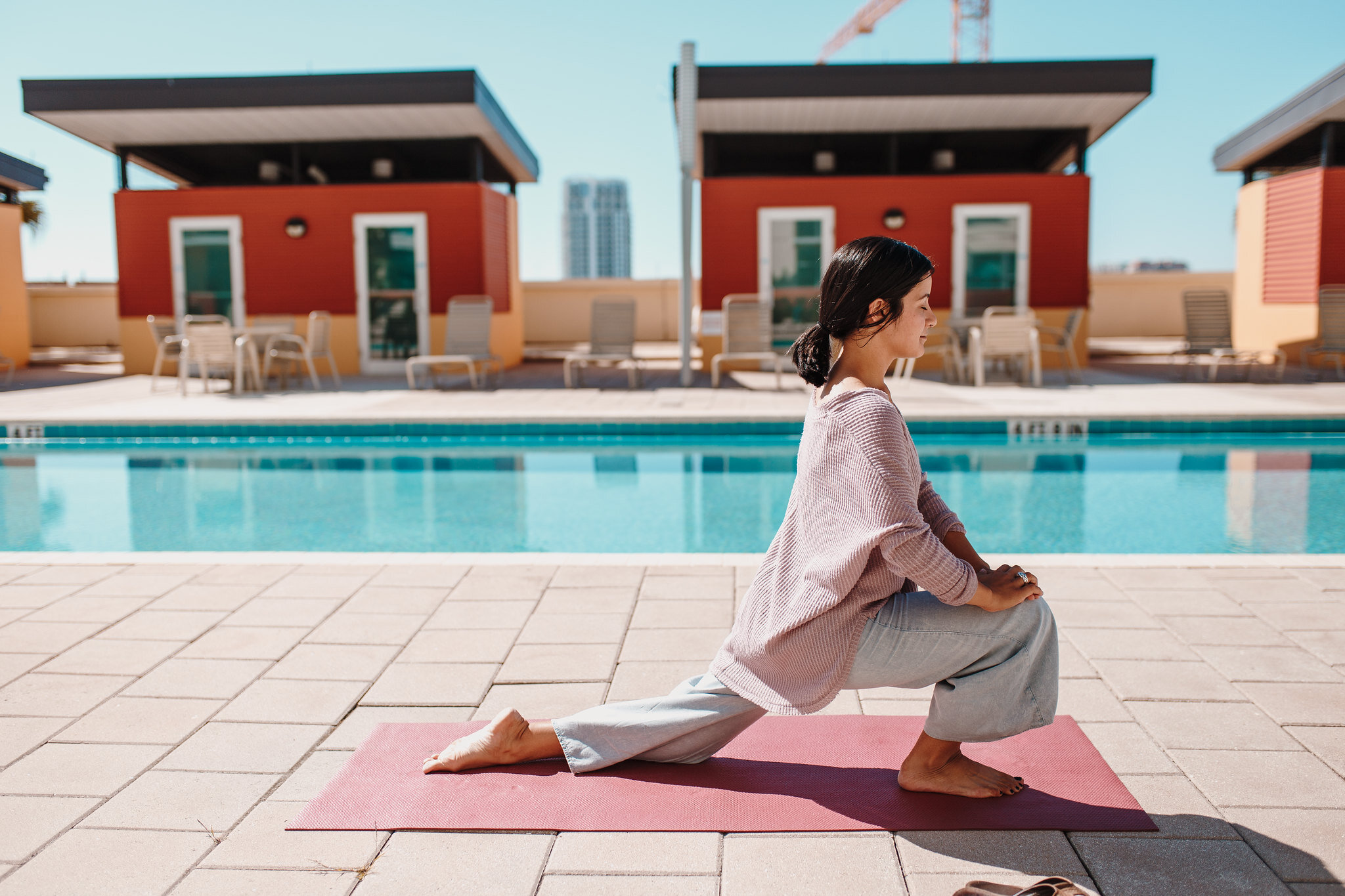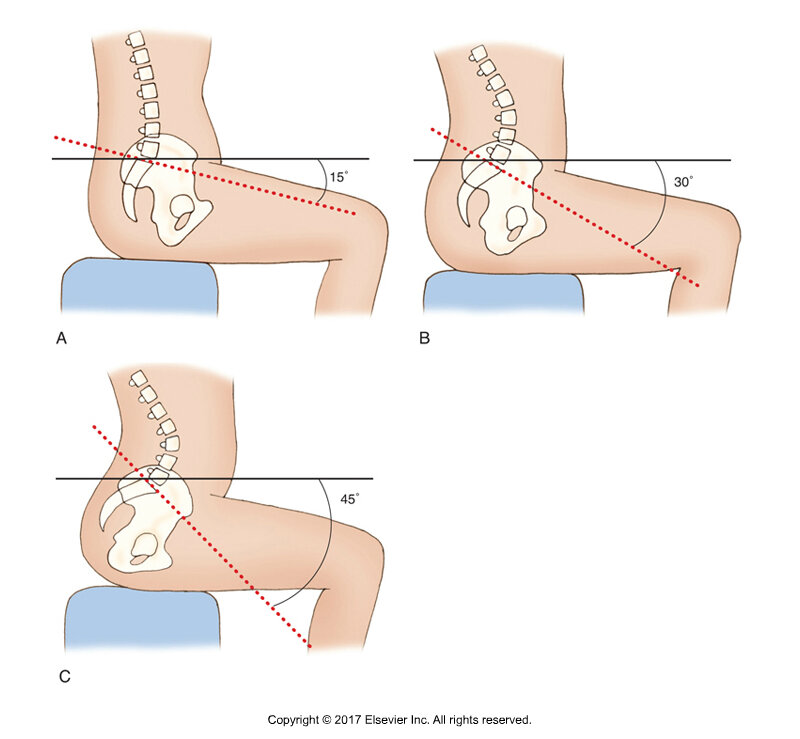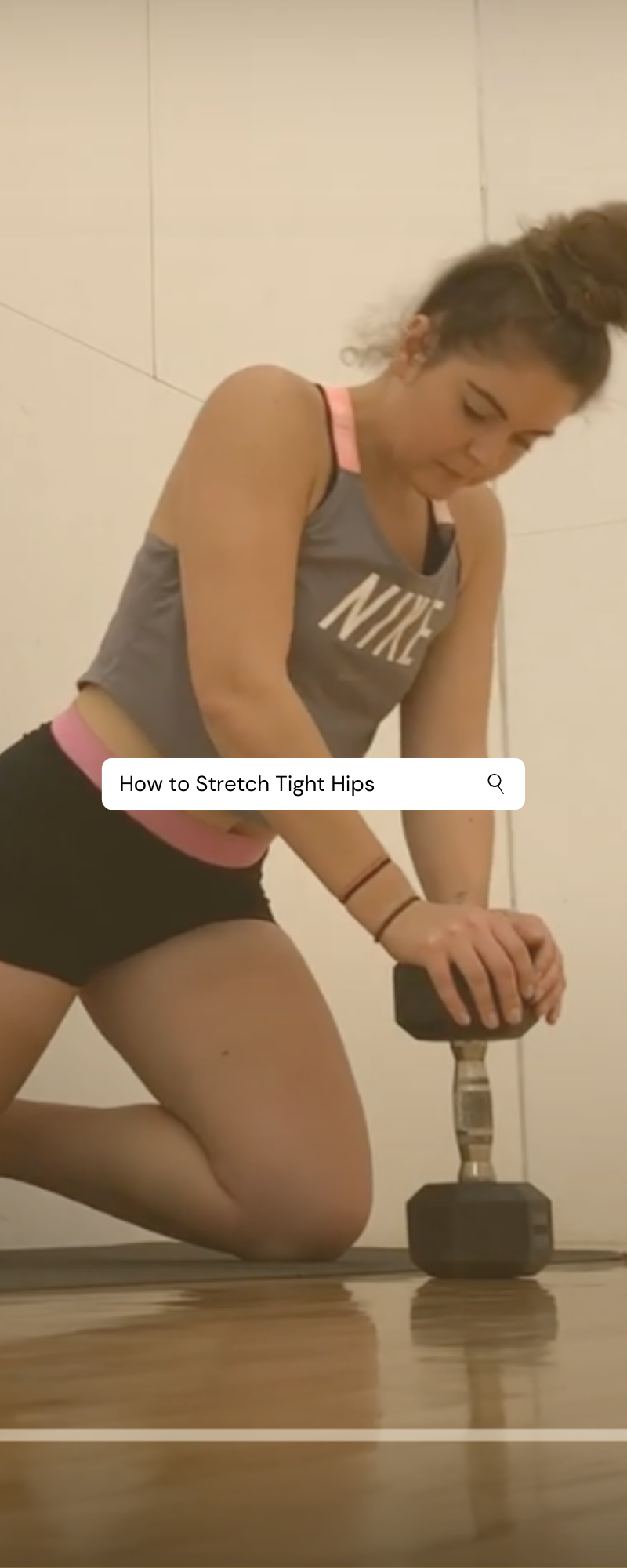How to Fix Tight Hips for Desk Workers in 3 Minutes
This post is brought to you by one of my best friends in the world, Allison from Flabs of Fitness. Join her free Facebook group for more insights like these and free workout tips!
Low back pain. Statistics say 80% of us will deal with it in our adult lives (1).
But where is that pain coming from?
We often assume that the point of pain is the spot in our body that is having the issues, but when it comes to the skeleton… that’s often not the case.
In this article, you’ll learn the true source of your low back pain, how to fix it, and what you can do to keep it from coming back.
Lower crossed syndrome
First, a little anatomy lesson.
In the personal training world, it’s no secret that hip tightness is running rampant in this modern age of desk workers. My friends and I often refer to these desk workers as “desk jockeys.”
If you’re a desk jockey, it’s highly likely that your low back pain isn’t a back issue at all. Rather, it’s an issue caused by keeping your hip flexors in the same, seated position for long stretches of time each day.
You’re essentially squeezing them together by keeping them constantly flexed.
So those hip flexors become extremely tight and begin pulling on your joints in an unnatural way.
Essentially, desk-sitting flips nature on its head.
In nature, the muscles that are tight are usually that way because they’re stronger. Conversely, the muscles that are more flexible are usually so because they are weaker.
In a person who is seated for most of the day, something called lower crossed syndrome has been noted as a common trend.
The person’s hips are tight, but they’re also weak. This is exactly the opposite of what our bodies were made to deal with.
Tight muscles that are strong at the very least will provide support to the skeleton, which somewhat counteracts the negatives of having tight muscles. But if those tight muscles are also weak… the skeleton is allowed to collapse and become misaligned.
Check this example of lower crossed syndrome for a better visual (2):
SACRAL BASE ANGLES. A, DECREASED ANTERIOR TILT AND HYPOLORDOTIC LUMBAR SPINE. B, NORMAL ANTERIOR TILT AND NORMAL LORDOTIC LUMBAR SPINE. C, LOWER CROSSED SYNDROME WITH INCREASED ANTERIOR TILT AND HYPERLORDOTIC LUMBAR SPINE. PERMISSION: JOSEPH E. MUSCOLINO. KINESIOLOGY: THE SKELETAL SYSTEM AND MUSCLE FUNCTION, 3ED (2017), ELSEVIER.
The tight hip muscles are pulling the pelvis forward and the seated position isn’t putting any load on those muscles for them to resist, keeping them weak.
Most people don’t know how to properly activate their core, so nothing is left to support the spine as the pelvis tilts forward and the vertebrae becomes misaligned.
How your joints affect the “in between” spaces
Hopefully the upper cross syndrome picture will help make this theory a little easier to explain, too.
You can see there how the muscles are affecting the hip joint, which in turn is affecting everything above it.
This is how oftentimes, you’re not feeling pain in the place that’s causing it.
The 3 main joint areas – ankles, hips, and shoulders – are a major source of pain for the areas “in between.”
Check out how a simple ankle misalignment can mess up all the other body parts up the chain (3):
While desks don’t necessarily cause ankle misalignments, the same theory applies at the hips. If your hips are tilted forward, the rest of the skeleton above it will be thrown off, too.
This puts strain on the supporting muscles and vertebrae, which are particularly sensitive thanks to all the nerves running in, out, and through the spine.
Long story short… it’s incredibly easy to cause a slur of problems by knocking one thing off.
How to Reverse Low Back Pain from Sitting at a Desk
As you probably don’t want to hear, the best way to get rid of back pain from sitting at a desk is to stop sitting at a desk.
Check out standing desk options, if at all possible.
I’m personally a fan of a standing desk + treadmill combo, because I fidget too much otherwise. But simply standing more is enough to reverse lower-cross syndrome caused by sitting too much.
The next thing you’ll want to work on to reverse low back pain from your desk is stretching out those tight hips… more on that below.
And last but not least, focus on strengthening your core and rear chain muscles to better support the spine. If you need help with this, find a trainer or a workout program that focuses on people who work at desks.
By sitting less, stretching the hips, and strengthening the core & rear chain, you’ll be restructuring your body to align properly and stop hurting you.
That is a lot better than aspirin, if you ask me.
The 3 best stretches to loosen your hips
Okay, the main event you’re here for: how to stretch out those painful hips in 180 simple seconds.
Keep in mind that there are several different types of stretching, including static (still) and dynamic (moving).
Two of the stretches below are dynamic, and one is static. Most people think it’s an “old person thing” to do dynamic stretches, but I quite enjoy them, and these are highly effective.
So, here we go. These 3 simple moves will loosen up those tight hip muscles and make it easier to sit with good posture at your desk – plus, they can be done anywhere.
SS Hip reaches
This is my absolute favorite dynamic stretch. I do it before any of my workouts and always include it in client warm-ups, too.
Plus, if I’ve been sitting for too long, you can find me hopping up to do a quick round of this.
Recommended repetitions: 5 reaches per stance, per side of the body.
Fire Hydrants
You’ll probably figure out why dynamic stretch #2 is called fire hydrants… but I promise, as goofy as it looks, it feels amazing and opens up your hips in a way most stretches don’t.
Recommended repetitions: 5 each direction, per leg
Wall hip stretch
Definitely save this one for last. Though it’s the only static stretch of these three, it’s the most challenging and might have you questioning this goal to loosen your hips.
I promise, though, once you power through it – this stretch does wonders for how you’ll feel the rest of the day.
Recommended holding time: 30 sec – 60 sec per leg
So… should you work on loosening your hips?
YES!
It might seem like a daunting task, especially after the first few times you try these stretches.
But your lower back, your spine, your overall posture, and your general health will thank you.
So get to it – and if you’re in an office where they think you’re weird for doing this, they’re probably just in pain, too. Get them to join in.
Sources
N.a., (2018). American Chiropractic Association. Back pain facts and statistics. Retrieved from: https://www.acatoday.org/Patients/Health-Wellness-Information/Back-Pain-Facts-and-Statistics
N.a., (2017). The Art and Science of Kinesiology. What is lower crossed syndrome and what are its causes? Retreived from: https://learnmuscles.com/blog/2017/05/02/lower-crossed-syndrome-causes/
N.a., (2013). Physio Excellence. Orthotic-foot alignment. Retrieved from: http://www.physioexcellence.com/orthotic-foot-alignment/
Sitting at a desk all day can cause your hips to tighten. In this guide, we’ll show you three simple stretches you can do at home or at the gym to relieve tightness in your hips. #fitness #wellness #stretching



